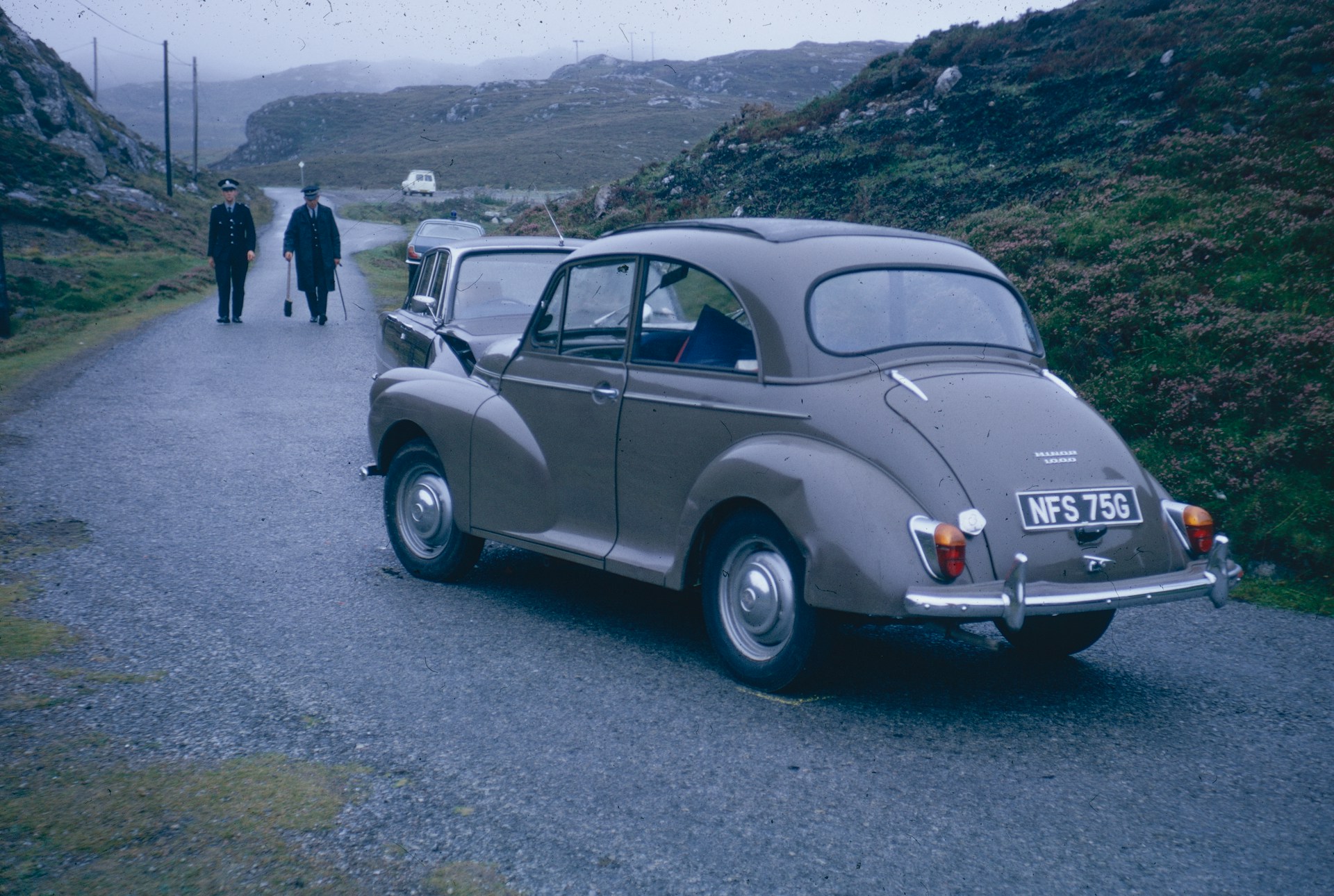Are you planning to purchase a car insurance policy soon? The price you’ll pay for coverage depends on several factors, including your age, gender, driving history, vehicle type and location, among other factors. This guide explores average auto insurance costs by location and how premiums are calculated. It also includes tips to help you save money on coverage.
Average Cost of Auto Insurance
Below is a breakdown of auto insurance costs, per Bankrate’s 2024 car insurance cost analysis.
National Averages
The average driver pays $2,329 per year for full coverage (or $633 for minimum coverage). This equates to $194 or $53 monthly.
State-by-State Comparison
Below are the average costs for minimum and full coverage by state:
- Alabama: $481 and $1,995
- Alaska: $456 and $2,205
- Arizona: $764 and $2,585
- Arkansas: $453 and $2,271
- California: $641 and $2,599
- Colorado: $582 and $3,259
- Connecticut: $946 and $2,467
- Delaware: $872 and $2,392
- Florida: $1,055 and $3,451
- Georgia: $861 and $2,562
- Hawaii: $373 and $1,543
- Idaho: $335 and $1,332
- Illinois: $584 and $2,179
- Indiana: $385 and $1,675
- Iowa:$340 and $1,848
- Kansas: $586 and $2,559
- Kentucky: $739 and $2,616
- Louisiana: $944 and $3,646
- Maine: $387 and $1,505
- Maryland: $908 and $2,548
- Massachusetts: $466 and $1,737
- Michigan: $885 and $3,010
- Minnesota: $672 and $2,442
- Mississippi: $490 and $2,169
- Missouri: $682 and $2,694
- Montana: $368 and $2,307
- Nebraska: $557 and $2,294
- Nevada: $971 and $3,074
- New Hampshire: $434 and $1,618
- New Jersey: $984 and $2,412
- New Mexico: $546 and $2,274
- New York: $1,544 and $3,697
- North Carolina: $609 and $2,040
- North Dakota: $357 and $1,809
- Ohio: $400 and $1,497
- Oklahoma: $526 and $2,698
- Oregon: $747 and $1,894
- Pennsylvania: $514 and $2,450
- Rhode Island: $810 and $2,717
- South Carolina: $567 and $1,797
- South Dakota: $342 and $2,239
- Tennessee: $468 and $1,956
- Texas: $693 and $2,426
- Utah: $778 and $2,078
- Vermont: $297 and $1,385
- Virginia: $675 and $2,027
- Washington: $498 and $1,686
- West Virginia: $533 and $2,079
- Wisconsin: $421 and $1,773
- Wyoming: $260 and $1,709
- Washington, D.C.: $767 and $2,444
Costs in Urban vs. Rural Areas
Factors Influencing Auto Insurance Costs
Auto insurance providers consider several factors when setting premiums.
Personal Factors
Age, gender and marital status are significant factors that affect your auto insurance cost. Each can lead to significant differences in your rates.
Age
Your age plays a crucial role in determining your car insurance rates. Insurance companies consider young drivers to be riskier to insure.
More specifically, teenagers and those in their early 20s often pay higher premiums because they are statistically involved in more accidents. On the other hand, once you reach 25, your rates may decline if you maintain a safe driving record.
Drivers between 30 and 65 generally enjoy lower rates because they are considered more experienced and cautious. Discounts may be available for drivers who complete defensive driving courses.
Gender
Gender can also impact your insurance rates. Historically, male drivers, especially young males, are considered at higher risk due to their driving patterns. Studies show that they are more likely to be involved in serious accidents and receive traffic violations. So, young males often face higher premiums compared to women. However, the difference in rates between genders tends to decrease as drivers age and gain more experience.
Marital Status
Your marital status is another personal factor that insurers use to calculate your auto insurance rates.
Married individuals generally pay less for car insurance compared to their single counterparts. Studies indicate that married drivers are often more careful and file fewer claims. Consequently, insurers view them as lower-risk clients.
If you get married, notify your insurance company, as it might lower your premium. This discount applies regardless of other factors like age or gender, making it a significant point for reducing costs.
Driving History
Car insurance companies evaluate your driving history when you apply for coverage. If you’ve been involved in auto accidents or receiving moving violations, you could pay more for a policy.
Accident History
If you’ve had one or more accidents, insurance companies categorize you as a high-risk driver with a higher likelihood of filing claims in the future. By contrast, a clean driving record typically gets you much lower rates.
Keep in mind that some insurance providers forgive the first minor accident you’re involved in after a certain period. However, subsequent incidents can skyrocket your premiums, especially if the incidents are severe or frequent.
Traffic Violations
Traffic violations like speeding tickets, DUIs and reckless driving charges also impact your insurance rates. Frequent traffic violations suggest risky driving behavior. This makes insurers more cautious when extending coverage to you and could lead to significant rate hikes or even policy cancellations.
Some providers will also penalize you for minor offenses. So, it’s best to maintain a clear record of violations to help make your auto insurance costs more manageable.
Vehicle-Related Factors
The type of vehicle you drive, and its safety features also impact the price you pay for an auto insurance policy.
Make and Model
High-performance or luxury vehicles often have higher insurance rates due to their expensive repair costs and increased risk of theft. By contrast, standard models and economical cars tend to have lower premiums.
If you drive a vehicle that is statistically more likely to be involved in an accident, you can expect higher costs. Certain brands also have higher repair costs, which can also increase your rates.
Year of Manufacture
Newer vehicles may have higher premiums because they have a higher market value, and repairs can be more costly. However, many come equipped with advanced safety features that can help minimize coverage costs.
Safety Features
These features may include anti-lock brakes, airbags, and advanced driver-assistance systems (ADAS) like lane departure warnings and automatic emergency braking. Some insurers also offer discounts for vehicles with anti-theft devices, which reduce the likelihood of theft.
Geographic Factors
In areas with inclement weather, drivers could pay more for coverage.
Location and Zip Code
Your physical location and zip code could also mean higher or more affordable premiums.
Urban vs. Rural Areas
Urban areas usually have higher car insurance rates compared to rural areas. This is due to the higher density of traffic, which increases the likelihood of accidents. Urban areas also tend to have higher rates of vehicle theft and vandalism, which also contribute to higher premiums.
However, drivers in rural areas generally get lower insurance premiums. Fewer cars on the road mean fewer accidents. And the reduced rate of vehicle theft in rural locations also helps drivers save on auto insurance coverage.
Coverage Choices
When choosing auto insurance, it’s important to understand the different types of coverage available, the limits you can select and how deductibles work. Your choices will impact both the level of protection you receive and your premium payments.
Types of Coverage
Although there are several types of auto insurance coverage, the minimum required by most states includes liability insurance. It covers damages and injuries you cause to cover.
That said, full coverage car insurance typically includes liability, collision and comprehensive coverage.
Collision insurance pays for damage to your car from an accident, while comprehensive insurance covers non-collision incidents like theft or natural disasters.
Uninsured/underinsured motorist coverage protects you if the other driver lacks sufficient insurance. And medical payments and Personal Injury Protection (PIP) cover medical expenses for you and your passengers.
Coverage Limits
Coverage limits determine the maximum amount your insurer will pay for a claim. For example, liability limits are often shown as three numbers like 25/50/15. This means $25,000 per person for bodily injury, $50,000 per accident for bodily injury and $15,000 for property damage.
Choosing higher limits gives more protection but raises premiums. For full coverage car insurance, you might see higher limits than what’s required for minimum coverage.
Each state has different minimum requirements, but raising those limits can provide added financial protection.
Deductibles
A deductible is the amount you pay out-of-pocket before your insurance covers the rest. Higher deductibles generally mean lower premiums, but you’ll pay more if you file a claim.
Common deductibles for collision and comprehensive coverage range from $250 to $1,000. Deciding on a deductible involves weighing your ability to pay upfront costs against your desire for a lower insurance premium. Keep in mind that deductibles don’t apply to liability insurance.
The Impact of Mileage on Insurance Costs
The amount you drive your car each year can significantly affect your auto insurance rates. Insurers often offer lower rates for low-mileage drivers and may have specific programs to track your mileage.
Low Mileage Discounts
Driving fewer miles each year can help you qualify for low mileage discounts. Insurance companies view low-mileage drivers as less risky because they spend less time on the road, reducing the chance of accidents.
For example, if you drive around 7,500 miles per year, your premiums may be lower than those of a driver who logs 15,000 miles annually.
Policies may vary, but some companies offer notable discounts for driving under a certain threshold. Be sure to check with your insurer to see if they provide low mileage discounts and what the requirements are.
Usage-Based Insurance Programs
Usage-Based Insurance (UBI) programs are another way mileage influences rates. These programs use telematics devices or smartphone apps to monitor your driving habits, including how many miles you drive.
UBI programs can be beneficial if you drive less frequently or have safer driving habits. By accurately tracking your mileage, insurers can offer more tailored rates.
This type of insurance can be a good option if your driving patterns are consistent with the low-risk, low-mileage profile that insurers favor. Be sure to inquire with your insurance provider about their UBI program options to determine if you could save more on premiums.
Tips for Lowering Auto Insurance Costs
Reducing your auto insurance expenses involves strategic steps such as availing of discounts, shopping around, increasing deductibles and maintaining a solid credit score.
Avail of Discounts
Many insurers offer various discounts that can significantly lower your premium. You can get discounts for safe driving, bundling policies, or even installing anti-theft devices in your car.
Some carriers also provide a discount if you take an approved defensive driving course. In select states, completing a driving safety course can trim up to 10 percent off your rate for several years.
It’s also worth checking if there are any age-related discounts available, such as those for senior drivers or students with good grades.
Shop Around
Don’t be afraid to look elsewhere for a better deal on auto insurance coverage. Insurance companies price policies differently, so it’s possible to get the same level or even more coverage for cheaper with a different provider.
Increase Deductibles
Remember, your deductible is the amount you pay out-of-pocket when filing a claim before your policy kicks in. If it’s higher, the insurance company assumes less risk and typically charges you less for coverage.
Maintain a Good Credit Score
In states that allow providers to use credit-based insurance scores to set premiums, a lower credit score could mean you’ll pay more for coverage. But if your credit score is solid, you could get a better deal on auto insurance.
Other Special Considerations
Teen Drivers
Teen drivers lack experience behind the wheel and carry more risk than more mature drivers. So, car insurance premiums are usually much higher. The upside is some insurers offer good student discounts, or you could get a break on premiums for your teen by enrolling in a driver’s education course.
Senior Drivers
If you are 70 years of age or older, you could also see a hike in your car insurance premiums. Studies show that older drivers often have slower reaction times, which can be problematic on the roadway and lead to accidents. The upside is driving fewer miles can make you eligible for low-mileage discounts.
High-Risk Drivers
High-risk drivers include those with multiple traffic violations, at-fault accidents, or a DUI on their record. Car insurance providers view these drivers as risky, with a high probability of future claims, leading to higher premiums.
To manage these high costs, high-risk drivers can look for insurers specializing in high-risk policies.
Improving driving habits and attending traffic school can help gradually reduce premiums. Cleaning up the driving record over time and avoiding new violations can also help your case.
How to Get an Accurate Auto Insurance Quote
To get an accurate auto insurance quote, you need to gather all the necessary information, compare quotes from different providers and consider specialized tools that can lend a helping hand.
Information You’ll Need
Gather your personal details like your name, address, and date of birth. Also, have your driving history handy, including accidents, tickets, and claims. And be prepared to disclose how you use the car and how many miles you drive annually on average.
You’ll also need to provide information about your vehicle, including the make, model, year and VIN (Vehicle Identification Number).
Insurance companies use these details to assess the risk and set premiums.
Comparing Quotes from Different Providers
Instead of doing all the legwork on your own, leverage a free tool like Experian’s Insurance Marketplace to do all the heavy lifting. You can enter a few details and receive loan quotes from a network of reputable providers right away. If you find a policy that works for you, Experian does the work behind the scenes to get you switched over. Visit the website to learn more or to get started.
Final Tips for Managing Auto Insurance Costs
Auto insurance doesn’t have to burn a hole in your pocket each time premium payments are due. Here are some suggestions to help you better manage these costs:
- Shop around: Compare quotes from different insurance companies. Prices can vary significantly, so take your time to find the best deal.
- Maintain a good credit score: In many states, your credit score affects your insurance rates. Improve your credit score to potentially lower your premiums.
- Increase your deductibles: Higher deductibles can lower your monthly payments. Just ensure you can afford the out-of-pocket expense if an accident occurs.
- Take advantage of discounts: Look for discounts offered by insurers. For example, you might get a discount by bundling home and auto insurance or by being a safe driver.
- Consider usage-based insurance: If you drive less frequently, a usage-based plan might make sense. These plans charge premiums based on your driving habits.
- Park in a garage: Some insurers offer lower rates if you park in a garage. This can reduce the risk of theft and damage.
- Take a defensive driving course: Completing an approved defensive driving course can also help reduce your premiums.
- Choose the right car: Newer, safer vehicles often have lower insurance costs. Check insurance rates before buying a new vehicle.







